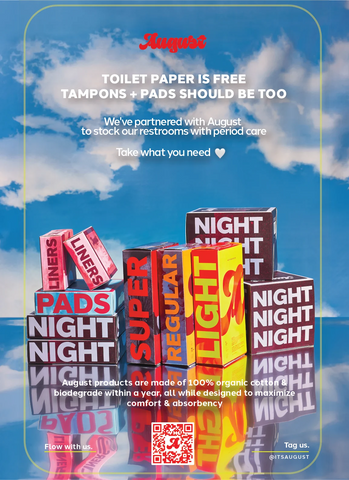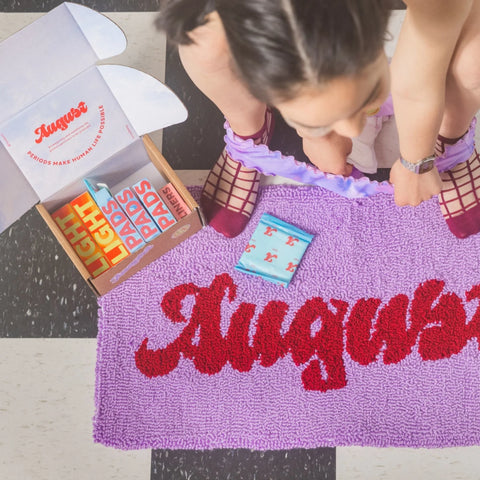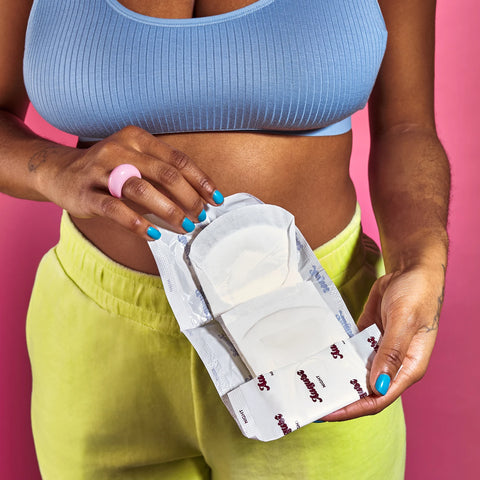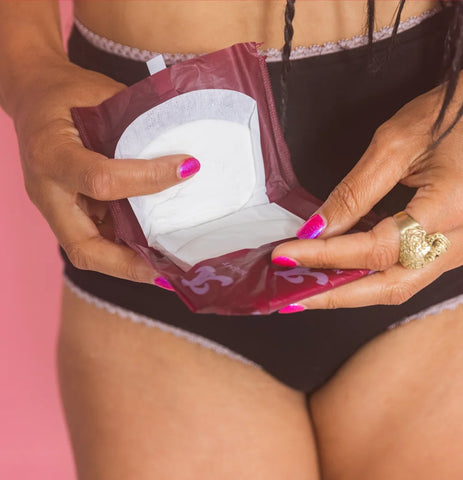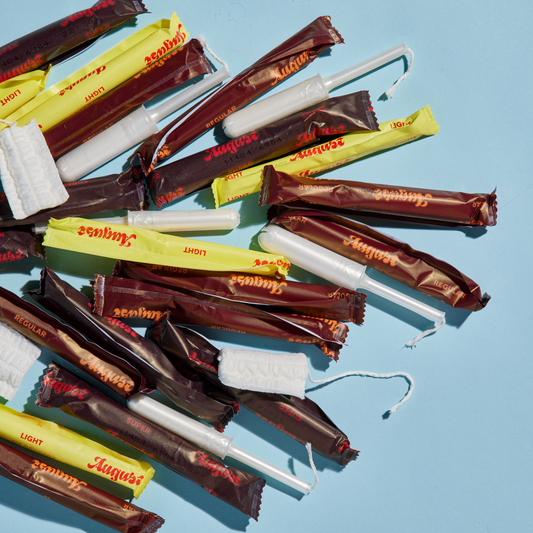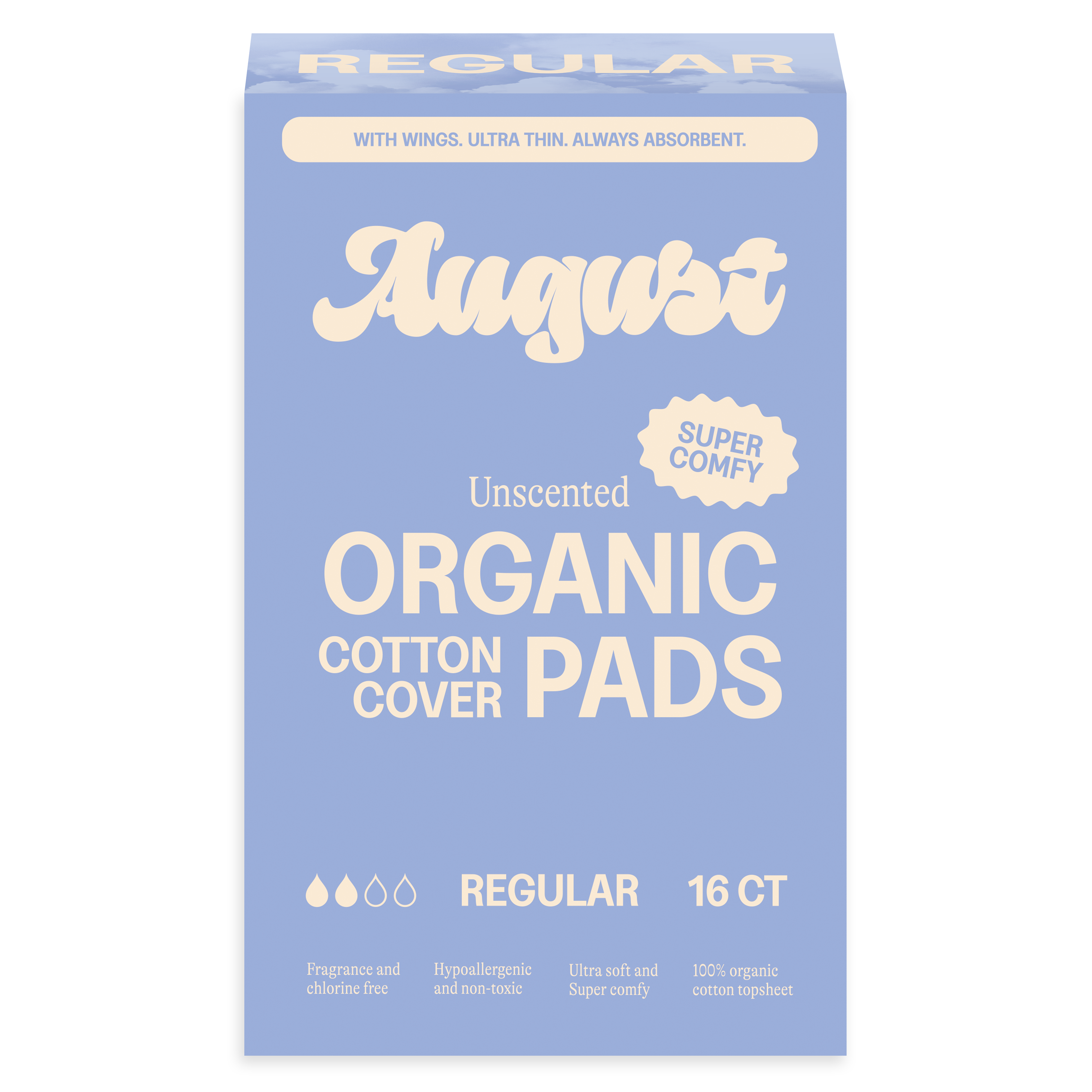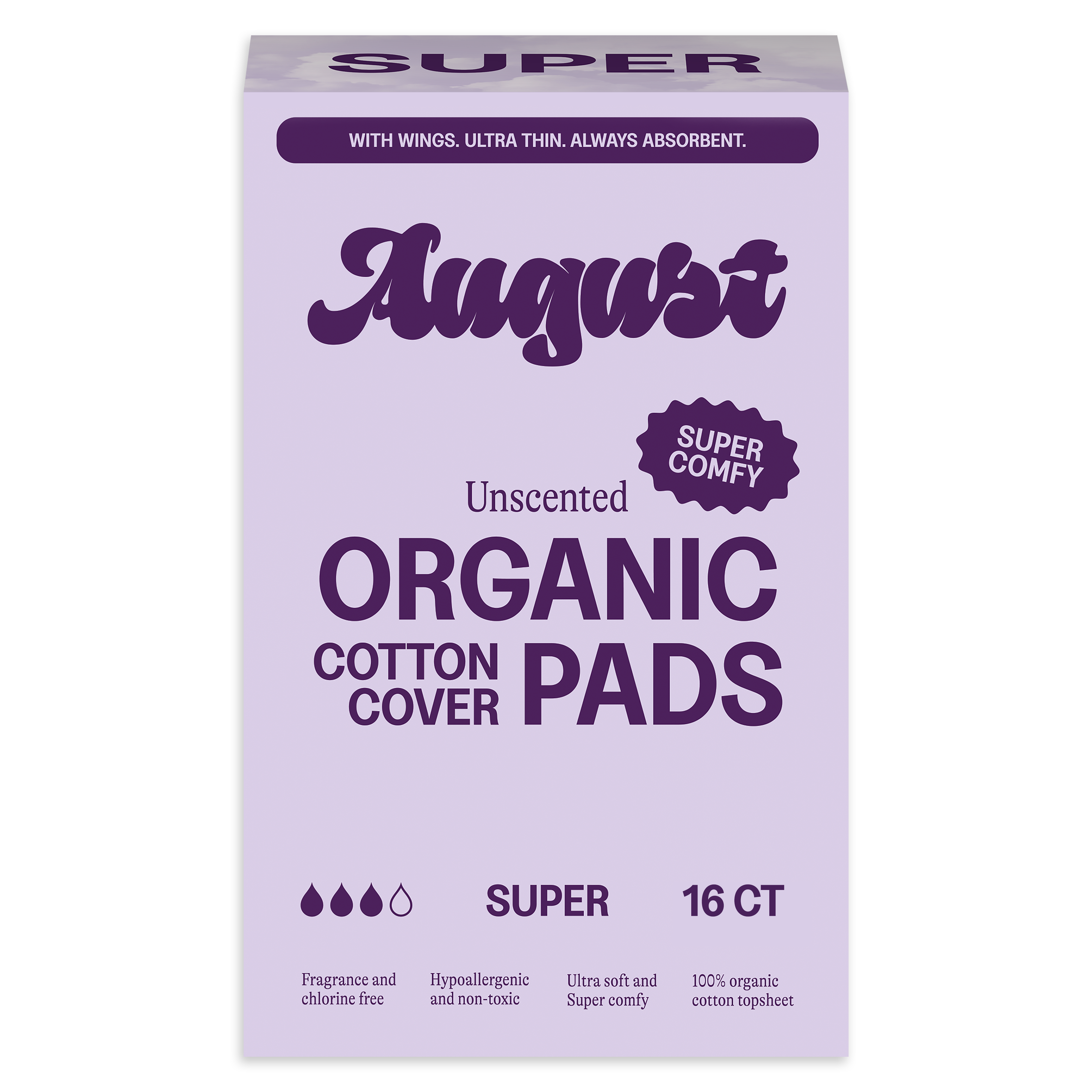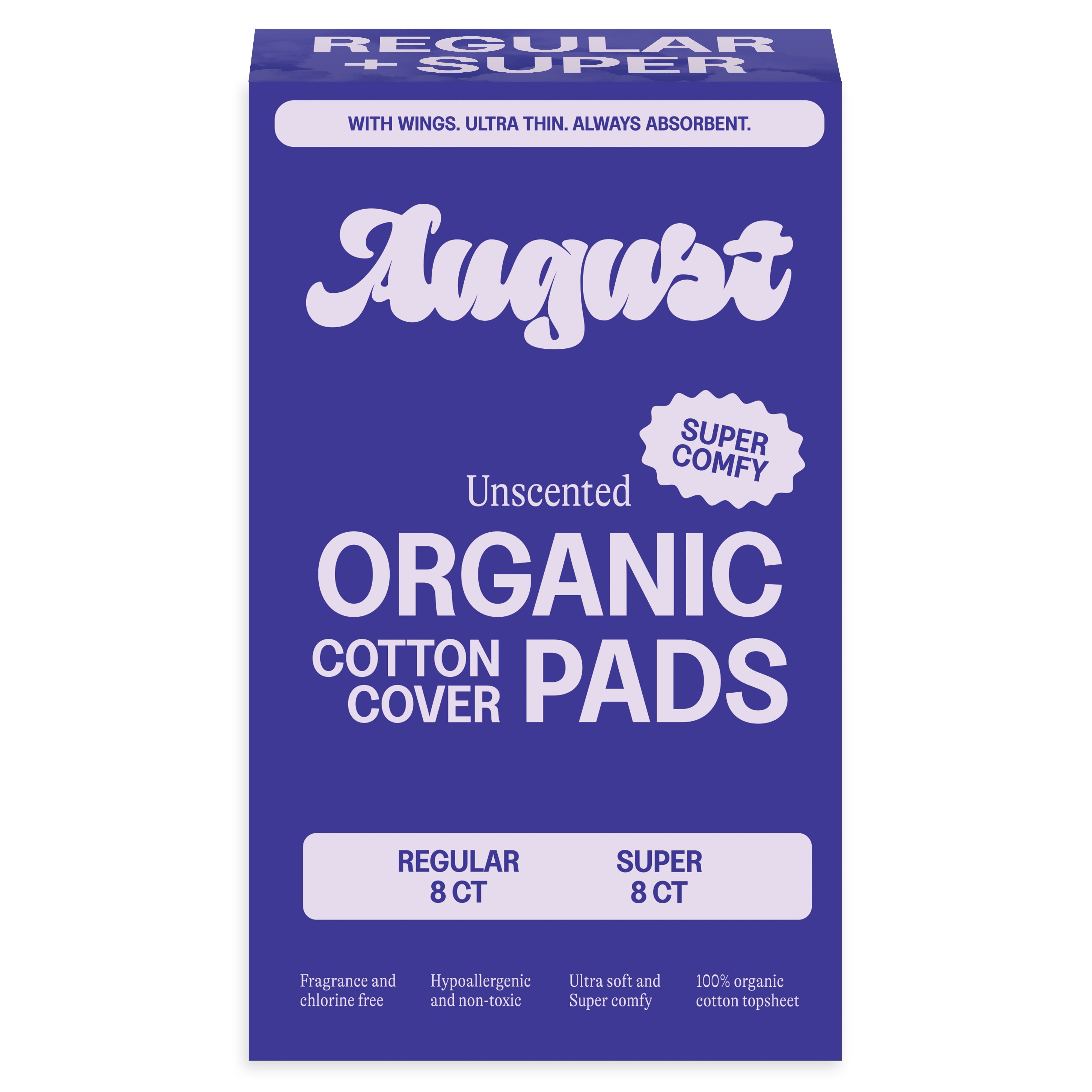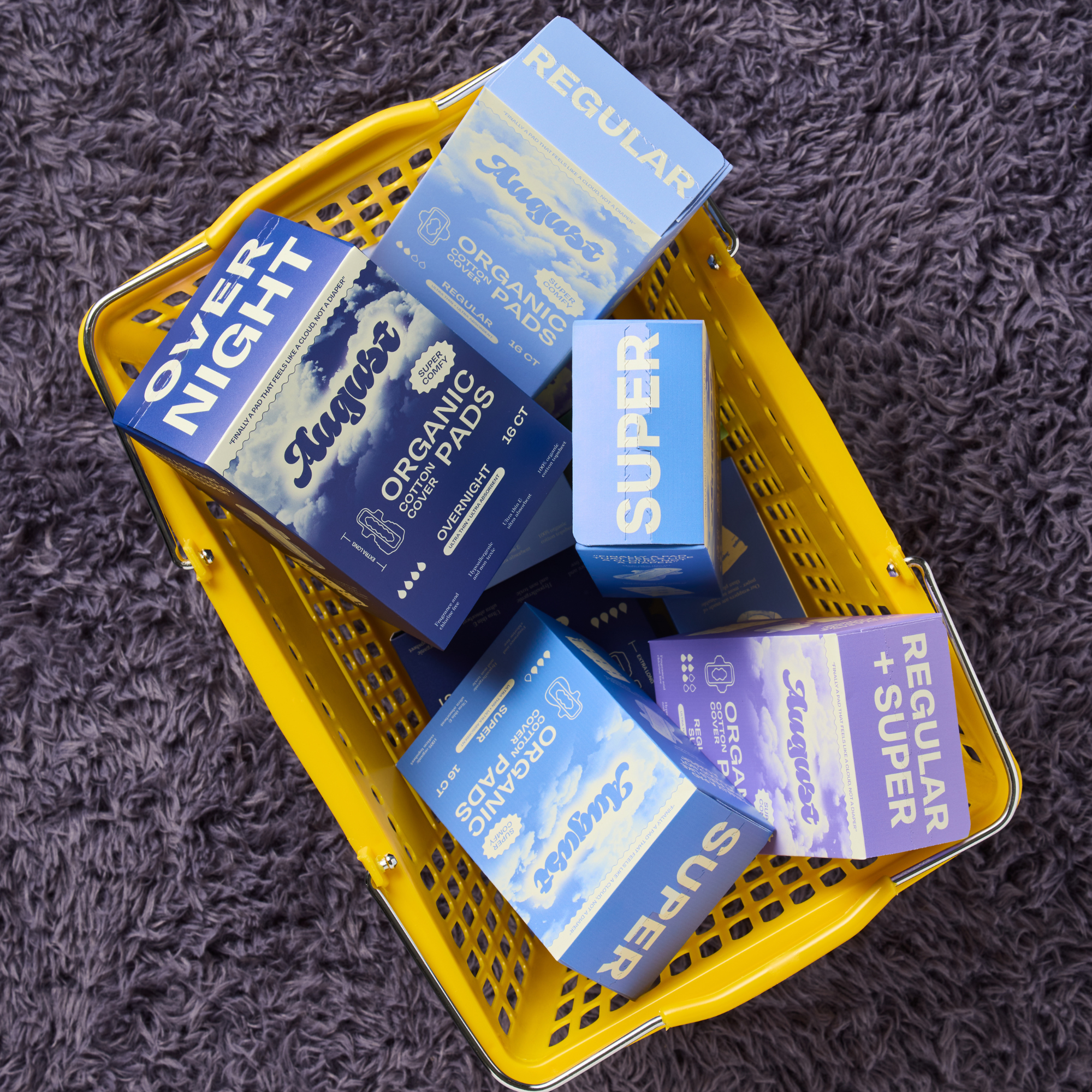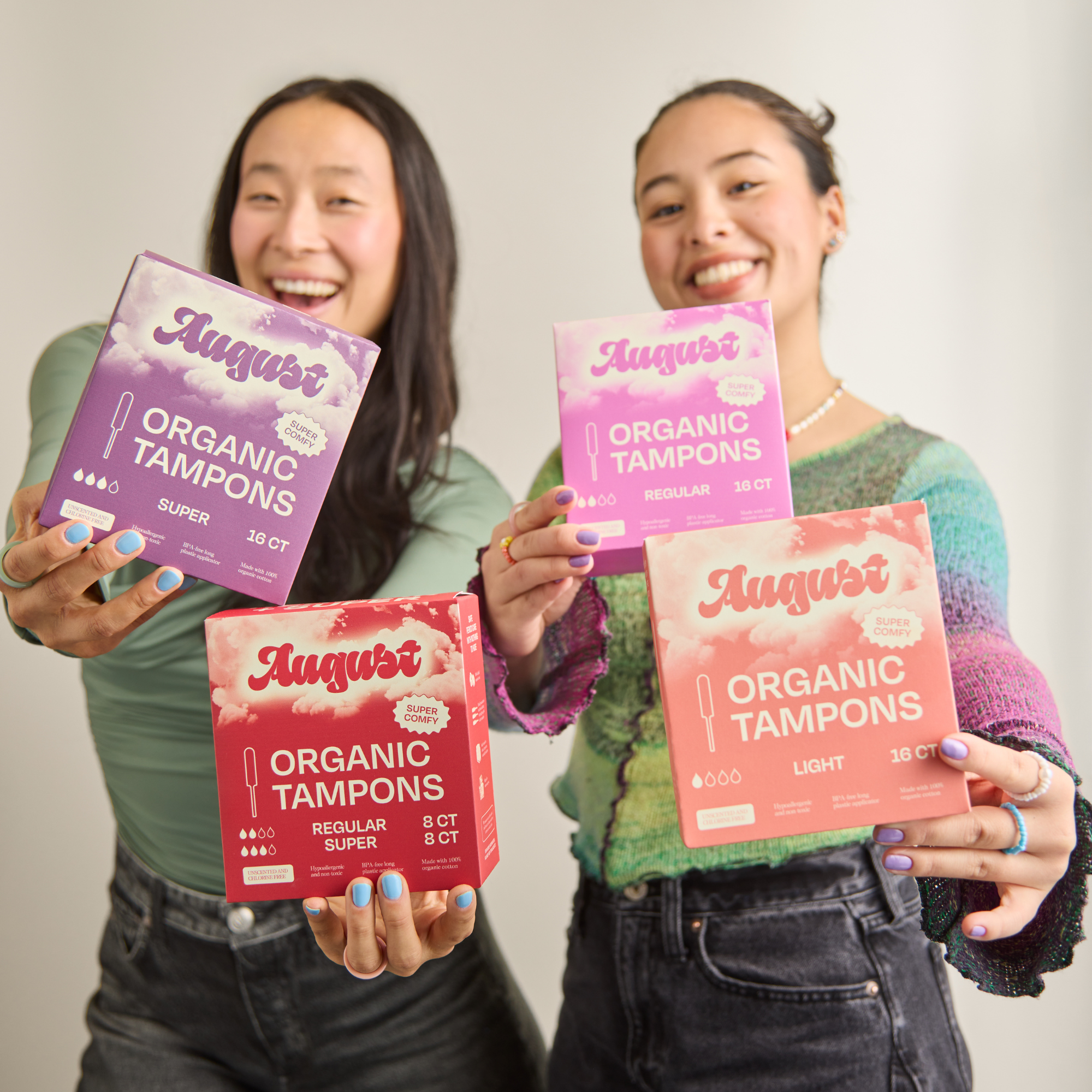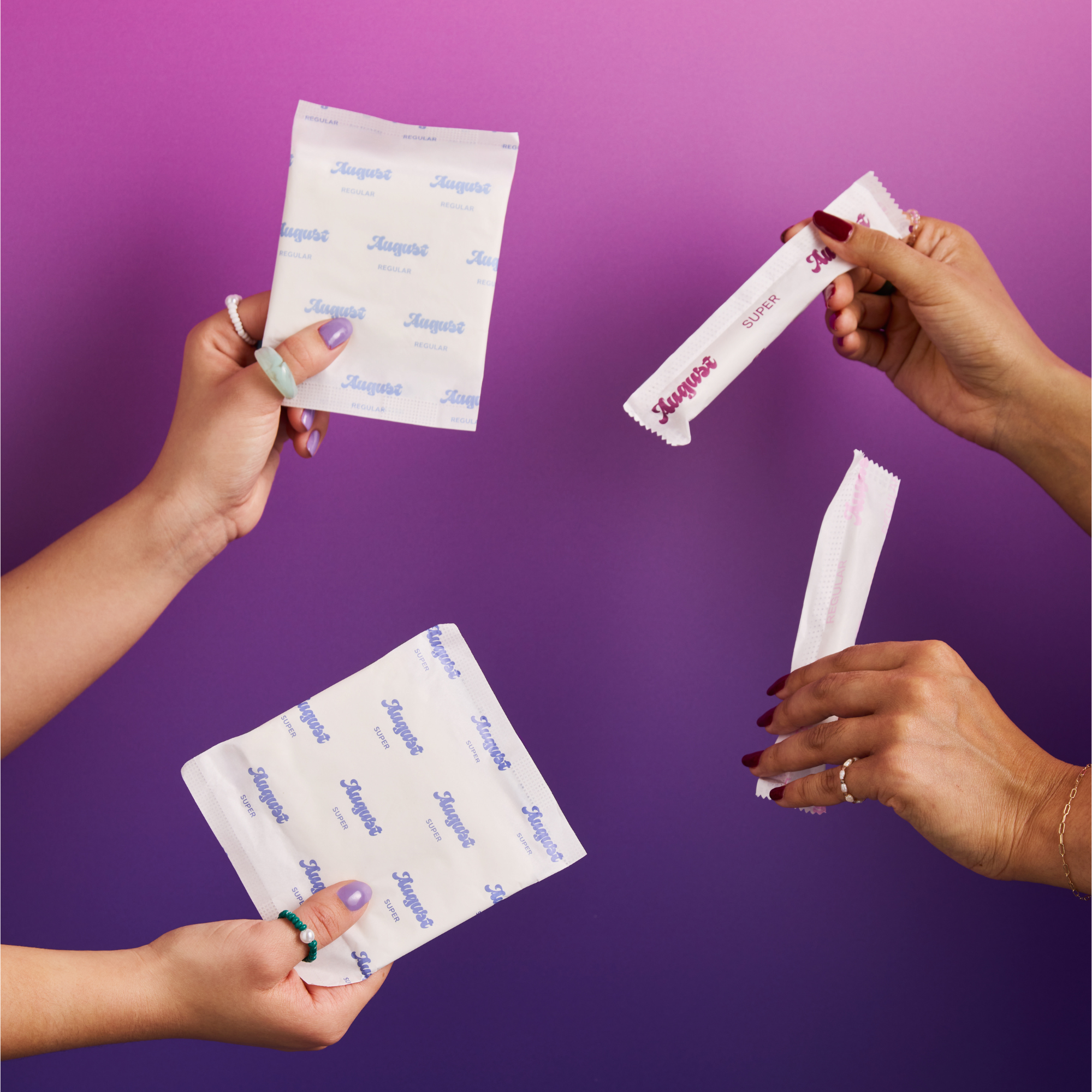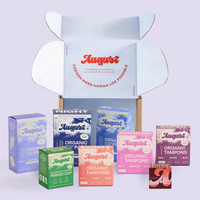Did y’all know that a non-menstruating man invented the first official tampon???
Obviously, people with a uterus were using makeshift period products for THOUSANDS of years prior to Dr. Earl Haas’ cardboard applicator design of 1931…but his was the first modern tampon
The story goes that he designed it for a ballerina friend of his who admitted that she stuck a sponge (OMG!) inside her vagina, instead of using a bulky pad.
Too bad August’s compact, ultra soft, non-crinkly pads weren’t patented yet…now ballerinas everywhere can wear pads in peace!
What was revolutionary about his design really was the applicator though, since touching vaginas and vulvas and private parts, in general, were all still very taboo.
Although the shape and insertion function seem very similar to the design 100 years ago, both the applicator & cotton part of August tampons have unique shapes to better fit the natural shape of YOUR vagina.
Plus, as @joannapashez’s tweet points out, they’re made (in part) by someone who actually hassss a uterus!
So, based on Dr. Earl Haas’ tampon design…let’ sunpack a few Qs from our community about tampon-use.

First and foremost: what is a tampon?
A tampon is a period product used to absorb blood and other substances that come out of your vagina during your period.
Actually, on a more technical level AND to help prove our points further down, tampons are actually a registered medical device! Let that sink in.
Tampons are designed to be small so they can be inserted inside of you (different from a pad which is larger and stays on the outside) – after you wash your hands of course.
So, if you are comfortable and want a more moveable product, try a tampon.
Why are tampons not recommended to be kept in for too long?
The main 2 reasons are
- to prevent the risk of Toxic Shock Syndrome
- to prevent leaks
Not all periods are created equal. It all depends on the heaviness of your flow and what absorbency you use (light, regular, heavy etc.)
Remember, tampon size is related to flow, NOT to vaginal size. So, the trick for knowing when to take it out, and which absorbency size to use is how much white is left on the tampon when you're bleeding. If there’s still quite a lot of white space on the tampon after removing it after about 4-8 hours, then you might prefer a lower absorbency tampon.
Another thing to note is that your flow might change throughout your period; heavier the first day or two and lighter toward the end (or vice versa!).
If you’re a first-time tampon user, start with a lighter tampon and get to know your flow.
In addition to private parts being taboo, the whole idea of using tampons was wrapped up in shame and social constructs…

Despite what the olden days taught us, using a tampon (which, we’ll remind you, is a medical device) does NOT change your virginity status.
Virginity, in and of itself, is a social construct created to shame people for being intimate with another person…tbh, that’s a whole other bag of beans to unpack for another day.
To be clear, tampons work equally as well for people who have or have not yet had any kind of sex. Only your first (consensual) sexual experience with someone can relate to virginity, and that should be completely your decision.
“But what about when the tampon breaks my hymen?? Doesn’t that take away my virginity?!”
Nope. Because, again, virginity = a social construct so it’s all just society’s made-up expectations, none of that is rooted in biological science.
It is true, however, that a tampon could ‘break’ your hymen but it’s nothing to be too concerned about since your hymen is usually worn down gradually over time anyways.
The hymen is just a thin layer of skin that gets thinner as it is worked in a variety of activities like horseback riding, cycling, climbing trees or even dancing!
Are cardboard tampons bad for you?

They aren’t bad for you, per say, but have YOU ever tried a cardboard applicator…OUCH!
The only part of a ‘cardboard applicator’ that is actually cardboard is the applicator which, in theory, is supposed to help you insert more comfortably but that material doesn’t really allow for any smooth sliding…
August is working to be more and more sustainable as we go, so, in all honesty, we did consider cardboard applicators very briefly but realized that we wanted to prioritize comfort & quality in our period product offerings.
So, we settled on BPA-free plastic, long-applicators that have a rounded, smooth-tip, allowing for a smoother insertion of our tampons.
The tampon itself is made from 100% organic cotton. When absorbing inside of you, the cotton part expands to be the shape of angel wings which was totally on purpose in our design model, since it fits the natural shape of your vagina!
And then the last little feature we want to highlight is the braided string that catches those sneaky little drops that may come through on those heavier flow days.
All in all, August tampons took the old-school design of a tampon and modified it with actual uteruses & feedback from our community in mind.
We hope you enjoyed this brief history of tampons and how August evolved the design to be more comfortable!

If you have more questions about period care products, how to break down period shame and stigma, or just want a good giggle about a period problem once in a while, follow along with us on:
And if you’re looking to try your first box of tampons: we’re here for you.



